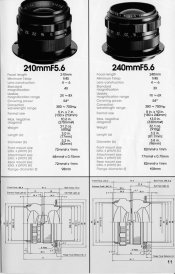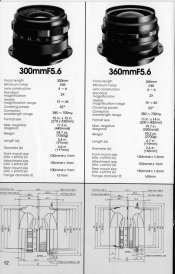H. G. Hart
Member
- Joined
- Oct 5, 2003
- Messages
- 17
- Format
- 8x10 Format
I'm looking for information on enlarging lenses' range of magnification and optimum magnification.
So far I have only found concrete data for Rodenstock lenses. I'm interested in any data for the 240 and 300 mm Componon-S and 240 and 300 mm El-Nikkor lenses, though I realize data for the El-Nikkors may be non-existent.
The only Schneider literature I have states a magnification range of 2-20:1 for the Componon-S lenses (an optimum magnification is not given); I suspect this is true for shorter lenses (i.e. 80mm) but inaccurate for lenses over 210mm which might have a range closer to 2-10:1. The G-Componon data sheet I have gives a range of 15-40:1 with optimum magnification at 20:1. In both cases the figures are for the entire group of lenses, not individual focal lengths.
Thanks for your help.
So far I have only found concrete data for Rodenstock lenses. I'm interested in any data for the 240 and 300 mm Componon-S and 240 and 300 mm El-Nikkor lenses, though I realize data for the El-Nikkors may be non-existent.
The only Schneider literature I have states a magnification range of 2-20:1 for the Componon-S lenses (an optimum magnification is not given); I suspect this is true for shorter lenses (i.e. 80mm) but inaccurate for lenses over 210mm which might have a range closer to 2-10:1. The G-Componon data sheet I have gives a range of 15-40:1 with optimum magnification at 20:1. In both cases the figures are for the entire group of lenses, not individual focal lengths.
Thanks for your help.












